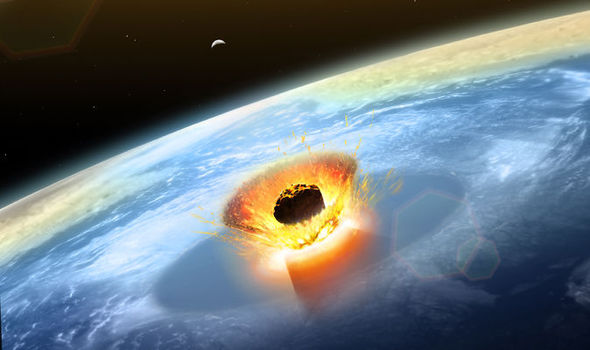
Our Earth, the planet we call home feels safe and cozy, but it hasn’t always been that way and chances are that someday another large asteroid will impact Earth.
Here is a list of Famous Craters around Earth – the results of previous collisions between Earth and Asteroids.
You can click on the “Calculate Impact Effects” links below and use Purdue’s Impact:Earth! to calculate the effects of these famous asteroid impacts.
Take a look at the Tunguska Fireball below. On June 30th, 1908 an asteroid 60 meters (196 ft.) in diameter is believed to have exploded in the atmosphere. The explosion flattened trees in the forests up to 700 miles away. Imagine if that asteroid had stayed aloft for a second or two longer before exploding. Cities like Paris or London would have been wiped off the map. (check the Wikipedia entry)
Famous Craters
- Meteor Crater, USA Projectile Diameter: 40 m
Projectile Density: iron (8000 kg/m3)
Impact Velocity: 20 km/s
Impact Angle: 45 degrees
Target Type: Sedimentary Rock
Calculate Impact Effects - Tunguska Fireball, Siberia 1908 Projectile Diameter: 60 m
Projectile Density: rock (2700 kg/m3)
Impact Velocity: 20 km/s
Impact Angle: 45 degrees
Target Type: Sedimentary Rock
Calculate Impact Effects - Ries Crater, Germany Projectile Diameter: 1500 m
Projectile Density: rock (2700 kg/m3)
Impact Velocity: 20 km/s
Impact Angle: 30 degrees
Target Type: Crystalline Rock
Calculate Impact Effects - Chesapeake Bay, USA Projectile Diameter: 2300 m
Projectile Density: rock (2700 kg/m3)
Impact Velocity: 20 km/s
Impact Angle: 45 degrees
Target Type: Water, depth 300 m
Calculate Impact Effects - Chicxulub, Mexico Projectile Diameter: 17500 m
Projectile Density: rock (2700 kg/m3)
Impact Velocity: 20 km/s
Impact Angle: 45 degrees
Target Type: Water, depth 100 m
Calculate Impact Effects
